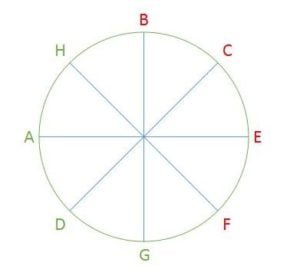Reasoning Puzzle Questions and Seating Arrangement Questions For Competitive Exams
Navigating the world of competitive exams, like Bank, SSC, and MBA tests, requires students to learn some very important topics. Among them, “Reasoning Puzzle Questions” and “Seating Arrangement Questions” are two big ones. These questions help test-takers prove their thinking skills in the exams and also improve their general logical abilities.
So, what are “Reasoning Puzzle Questions“? These questions make students think hard and use the given clues to find answers. They challenge the students to connect different pieces of information in a logical way, helping improve their thinking skills.
Now, let’s talk about “Seating Arrangement Questions“. These questions test how well a person can picture and set up information in their mind. They need a lot of focus, patience, and understanding of tricky instructions. They’re key for knowing if a student is good at problem-solving.
Interestingly, many tests mix “puzzle and seating arrangement” together. When we see “puzzles & seating arrangement” in a question, it means students need to use both skills to find the answer. This mix of “puzzle seating arrangement” shows how important these topics are.
There are also other materials like “puzzle questions reasoning” that give more details about the different puzzle types. Some students, while studying these reasoning topics, also look at resources from other subjects, like “puzzle and seating arrangement”, to strengthen their overall skills.
To wrap it up, “Reasoning Puzzle Questions” and “Seating Arrangement Questions” are more than just exam topics. They are crucial skills needed in many job fields. So, learning the details of “puzzle and seating arrangement” is not only for passing exams but also for future career success. Study hard, practice a lot, and use these topics to shine in the world of competitive exams!
Sets :Reasoning Puzzle Questions and Seating Arrangement Questions
Set-1
Eight persons A, B, C, D, E , F, G and H are sitting around a circular table. 4 of them are facing towards the centre and 4 of them are facing away from the centre. Further, the following information is known:
B is sitting second to the left of both A and E. H is sitting to the immediate left of both A and B. A is facing the centre. D is sitting third to the right of E. G and E are not sitting adjacent to each other. H, D and G face the same direction (I.e, towards the centre or away from the centre). C is not sitting adjacent to G.
1. Who is sitting third to the left of F?
2. Who is sitting second to the right of C?
3. Who is sitting opposite to D?
4. Who is sitting second to the right of D?
5. For how many members, the direction they face can be uniquely determined?
Set-2
8 friends A, B, C, D, E, F, G and H are sitting on a row facing the north. Each one of them has a different number of coins among 1, 2, 3, 4, 5, 6, 7 and 8, not necessarily in the same order. Further, the following information is known.
4 persons are sitting between A and B. A is neither the first nor the last person in the row. The number of coins with the person sitting at the left extreme is equal to the sum of the number of coins with A and B. E has 2 coins and is sitting in the right-most seat. A is not a neighbour of E. 3 persons are sitting between F and G. F has 2 more coins than G. G is not a neighbour of A. H is not a neighbour of G. The sum of the number of coins with C and D is 13. C has more coins than D. The number of coins with H is equal to the sum of the number of coins with F and G. C is sitting adjacent to H. A has more coins than B.
6. What is the number of coins with F?
7. The sum of the number of coins with E and B is equal to the number of coins with
8. What is the sum of the number of coins with the persons sitting adjacent to H?
9. Who is sitting third to the right of the person with 4 coins?
10. For how many persons, the number of coins with the person is less than the number of coins with both of his neighbour(s)?


